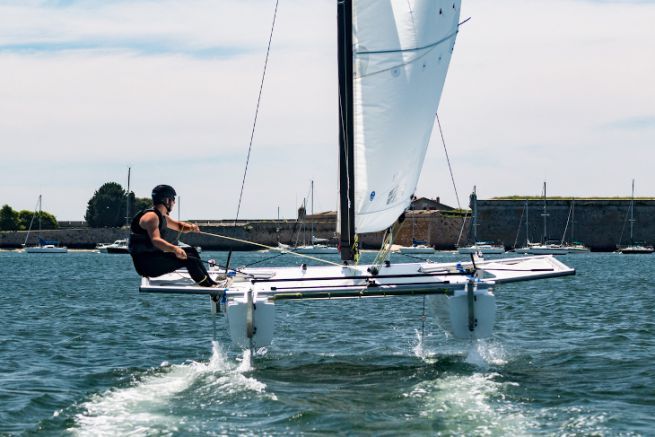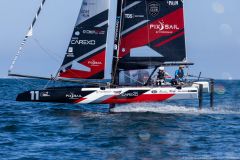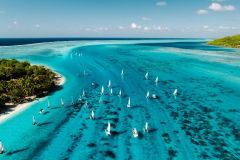A hydrofoil catamaran for sailing schools
Befoil presented its hydrofoil sports catamaran for the first time during the autumn boat shows. It is a 16-foot flying multihull designed to introduce these new sensations to an uninformed public. "Our first public is sailing schools for foil initiation," explains Alan Le Calvez, project manager at BeFoil - Magnard Innovation. "The boat is designed for classic course formats, without having to take private lessons. It's a school specification: 16 feet, double, for teenagers or adults."
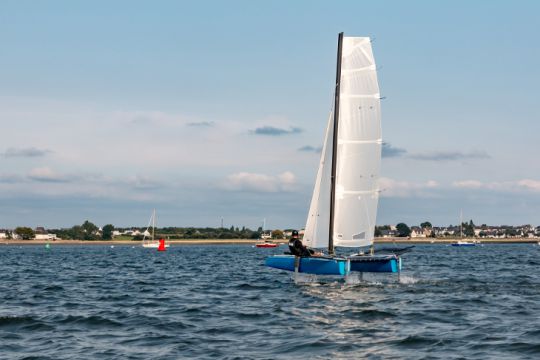
Accessible materials and options
To make the boat easier and safer, the BeFoil team focused on materials and equipment. The hulls of the standard sailboats will be made of rotomoulded thermoplastic, more affordable and less fragile than the classic composite in a sailing school use. "In addition, they will be lighter than those of the prototype that we had voluntarily reinforced," says Alan Le Calvez. The mainsail can be used to soften the boat if necessary and abseiling ladders have been preferred to trapezoids to make sailing easier for beginners. Finally, the beams and appendages, foils and rudders, are made of aluminium. "We wanted to be accessible technologically and in terms of price," explains Alan Le Calvez, "and we will also offer a kit with classic rudders and daggerboards to use the BeFoil as a classic multihull. This will avoid a double investment in sailing schools."
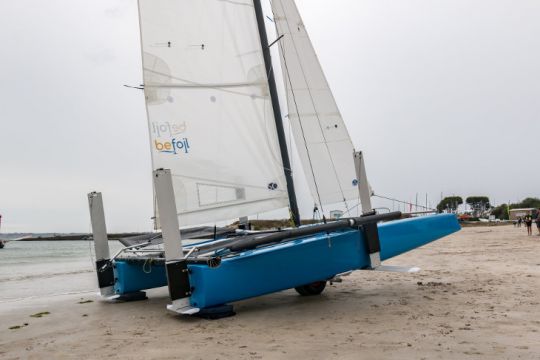
A sailboat Made In France
The prototype was presented at the start of the 2018 school year. BeFoil plans to launch the first production catamarans in the first quarter of 2019. They will be assembled in Lorient. The parts will be produced in France. The dies for the construction of aluminum appendages are located at Hydro Extrusion in Chateauroux.
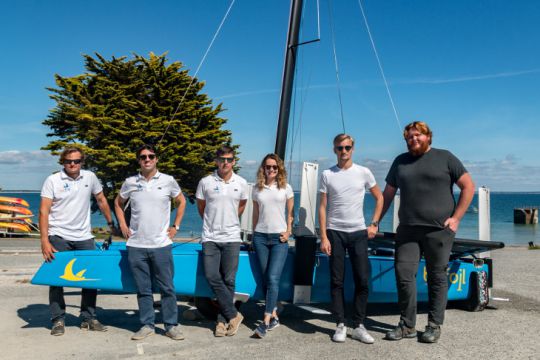
A product in the spirit of the times
While all regattas, whether dinghy, America's Cup or ocean racing, are being held on flying boats, the general public also wants to take off. Finding the right support, affordable financially and technically, is a challenge for manufacturers and an expectation of sailing schools. The Glénans and the UCPA already offer courses on hydrofoil sailing boats, from moth to RS Aero. In the catamaran segment, several competitors are positioning themselves, from Flying Phantom to iFly15. Who will be able to conquer the market, while remaining affordable?

